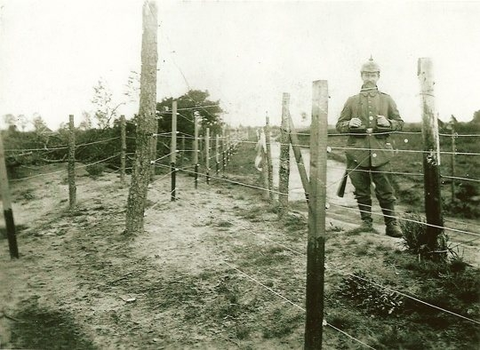You have no items in your shopping cart.
The earliest mentions of Electrified Fencing can be found in a variety of publications, Domestic Manners of the Americans by Fanny Trollope, First published in 1832 it describes an arrangement of wires connected with an electrical machine used to protect a display called "Dorfeuille's Hell" in the Western Museum of natural history in Cincinnati, which she herself invented. Published in 1870, Chapter 22 of Jules Verne's 20,000 Leagues Under the Sea, describes, "The Lightning Bolts of Captain Nemo" used for the electrification of a structure as a defensive weapon. Published in 1889, Mark Twain's novel A Connecticut Yankee in King Arthur's Court, uses an electric fence for defensive purposes.
David H. Wilson obtained United States Patent 343939 in 1886, combining protection, an alarm bell, and telephone communications. He constructed an experimental 30-mile electric fence energized by a water wheel in Texas in 1888, but it was not successful.
The electric fence was used as long ago as the late 19th century by ranchers in Texas as a way to contain their cattle. The fences were intended to be less dangerous to the cattle than barbed wire, but as with all early fence designs these were impractical, very dangerous and their use was not widespread.
These fences were all based on the standard electricity as we know in the current mains system and consequently decidedly dangerous.


This is shown by the Russian army who installed improvised electric fences during the Russo-Japanese War at Port Arthur in 1905 and by the Germans during World War I, 1915, the German army installed the "Wire of Death", a series of electrified fences along the border between Belgium and the Netherlands to prevent un-authorised movement of people across the border. The fences covered 300 kilometres and consisted of several strands of copper wire, backed with barbed wire, and energised to several thousand volts. An estimated 3,000 human fatalities were caused by the fence, as well as the destruction of livestock. Again during the Second World War these fences were utilised by German, English and Japanese combatants around prisoner of war camps but more notorious were the fences surrounding the German concentration camps. These were all high voltage, high amperage applications.
The early development of the modern, pulsed electric fence commenced in New Zealand in 1936 when William "Bill" Gallagher built a primitive energiser from a cars' ignition coil to keep his horse off his car. This was soon extended to a fence and progressed from there. These early fence charging devices used alternating current (AC) with a transformer and a mechanically operated switch, giving long pulses and sometimes delivered unpredictable voltages. As might be expected, these mechanical switches frequently failed and the development of using capacitors and solid state circuits by another New Zealander, Doughy Phillips, greatly improved the efficiency of the system. These were generally known as "weed burners" as they tended to burn weed growth but did cause fires on occasions.
 Later Energisers are highly effective.
Later Energisers are highly effective.
By the 1980's - by using thyristors, the shock pulse could be made much shorter - typically a few milliseconds making the fences even safer and at the same time the amperage was further reduced into the low milliamp range. These improvements resulted in the ability to extend the length of wire that could be energised by a particular energiser. This coincided with the introduction of woven plastic twines containing thin metal filaments that became popular, the older weed burners were phased out due to the damage caused to the plastic. These "low impedance" energisers are now the only type produced by reputable manufacturers.
Development of the energiser has continued and accelerated with the advent of micro circuit boards and are now capable of reading what is touching the fence and react accordingly plus interact with GPS technology to notify the owner when they are being stolen or are not functioning. Some models may be remotely controlled by using telephonic signalling to switch off and on plus supply regular readings of the operating state of the fence.








← Older Post Newer Post →
0 comments